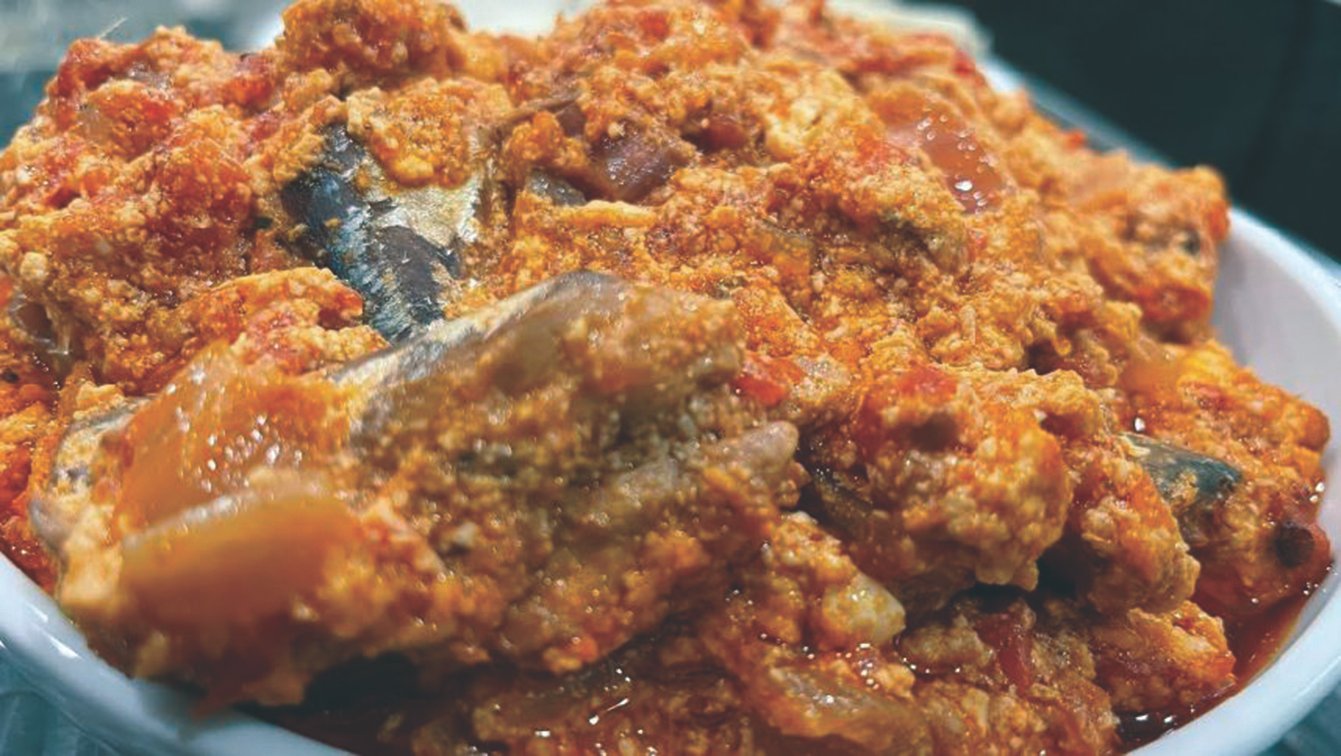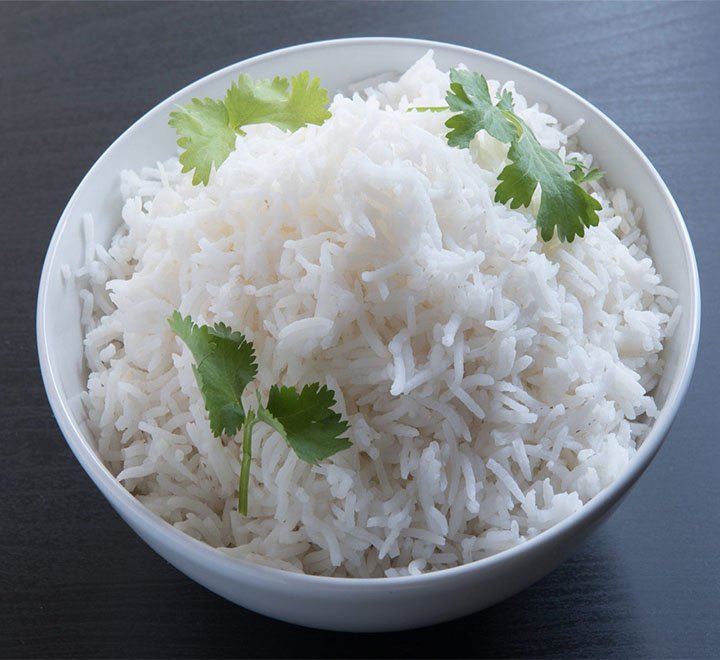Nutrition
Agushi stew

Ingredients
-2 cups of agushi
-5 large tomatoes
-2 large onions
-2 large salmon
-Momoni (saltered fish)
-2 tablespoonfuls of powdered pepper
-Ginger
-Garlic
-1 tin of mackerel
-1 liter of palm oil
Preparation
– Wash tomatoes, onion, garlic, ginger and blend
– Wash salmon, cut it into shanks
– Put a saucepan on fire and pour palm oil in it
-Put saltered fish in oil and fry
-Add blended onion, tomatoes, garlic and ginger to it (Allow it to cook for sometime)
– Add pepper to the blended tomatoes and onion and stir (Allow it to cook for 10 minutes)
-Add salmon, mackerel, and salt to taste.
– Mix agushie with water and add to the stew and stir.
-Allow stew to simmer
– Serve stew with plain rice and plaintain.
By Linda Abrefi Wadie
Nutrition
Chicken fried rice


Ingredients
• 5 cups of white cooked rice
• 5 tablespoonful of oil
• 2 pounds of chicken (drum sticks)
• 3/4 teaspoonful of grounded ginger
• Salt to taste
• 1/4 teaspoonful ground pepper
• 1 large onion
• 2 large garlic
• 1 cup frozen peas and carrots
• 5 large eggs
• 3 large carrot
• 5 tablespoonful soy sauce
• 3 tablespoonful of chopped green onions
Preparation
- Cut chicken into pieces and put it on fire in a pan
- Add ginger, salt and pepper to chicken
- Allow it to cook for five minutes
- Put a saucepan on fire and pour 2 tablespoonful of oil
- Add cooked chicken to the oil and fry
- Add eggs, diced onion, garlic, peas and carrots and stir
- Add cooked rice to vegetables and stir
- Sprinkle soy sauce and stir
- Serve dish with shito, hot pepper or sauce
By Linda Abrefi Wadie
Join our WhatsApp Channel now!
https://whatsapp.com/channel/0029VbBElzjInlqHhl1aTU27
Nutrition
Why RUTF must be added to the NHIS; A call for national action

Despite RUTF’s proven ability to save lives, access to it in Ghana remains inconsistent. Many caregivers face long travel distances to treatment centres, only to be told that supplies have run out. Others rely on community health workers who do their best but struggle with stock shortages. The core challenge is simple: RUTF in Ghana depends heavily on donors, and when global priorities shift or funding gaps emerge, children suffer.
RUTF’s which stands for Ready-to-Use Therapeutic Food is a high-energy, micronutrient-rich food paste designed to treat severe acute malnutrition in children. This raises an important question: why is a life-saving product, essential to child survival, not covered under the National Health Insurance Scheme (NHIS)?
Including RUTF in NHIS would mark a monumental shift in how Ghana approaches child health. Firstly, it would ensure that access to RUTF becomes a national obligation, not an act of charity. Severe acute malnutrition is a medical condition, just like malaria, pneumonia, or diabetes, and must be treated as such. With RUTF included in the NHIS medicines list, families would be guaranteed treatment without depending on unpredictable donor supplies.
Secondly, integrating RUTF into NHIS is cost-effective. Untreated malnutrition leads to complications such as severe infections, developmental delays, and prolonged hospital admissions, all of which are far more expensive for the health system than early intervention. Investing in RUTF through NHIS would reduce long-term healthcare costs while strengthening Ghana’s commitment to the Sustainable Development Goals, particularly SDG 2 and SDG 3.
Thirdly, including RUTF in the scheme would help eliminate inequities. Currently, access varies by region. Children in remote or hard-to-reach communities often suffer the most. When RUTF is made universally available, every child is guaranteed treatment when they need it.
Additionally, NHIS coverage of RUTF would help streamline procurement systems, improve supply chain consistency and strengthen accountability mechanisms, a gap that currently undermines national nutrition efforts.
At its core, this is an issue of fairness, governance, and national responsibility. If Ghana truly prioritises child survival, then RUTF must be placed where it belongs, that is, within the NHIS as an essential, guaranteed treatment.
Feature article by Women, Media and Change under its Nourish Ghana: Advocating for Increased Leadership to Combat Malnutrition project







